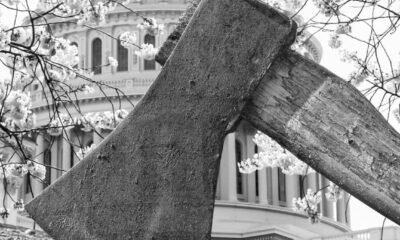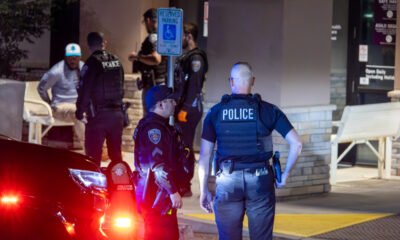Amy Coney Barrett
Supreme Court Raises Eyebrows Over Biden’s ‘Ghost Gun’ Regulation Challenge

WASHINGTON — The U.S. Supreme Court deliberated Tuesday on the Biden administration’s authority regarding regulations for kits enabling the assembly of untraceable firearms, known as ghost guns. The justices appeared skeptical about claims that this rule constituted an overreach of power.
The case, Garland v. VanDerStok, focuses on a 2022 rule from the U.S. Bureau of Alcohol, Tobacco, Firearms, and Explosives (ATF). This regulation expanded the definition of “firearms” to encompass ghost guns under federal law. These firearms lack serial numbers, making them easily purchasable online and quickly assembled from parts.
U.S. Solicitor General Elizabeth Prelogar, representing the Biden administration, stated that crimes involving untraceable guns have surged in the United States. She emphasized the importance of serial numbers in tracking firearms used in criminal activities, arguing that the industry has adhered to this requirement for decades.
Highlighting the rapid assembly time of ghost gun kits, Prelogar noted that these firearms attract individuals unable to legally purchase guns, as well as those intending to use them for criminal purposes. She pointed to a tenfold increase in ghost gun-related incidents since 2016 as justification for the 2022 regulation.
The rule mandates that manufacturers of firearm kits must affix serial numbers and conduct background checks on purchasers. It clarifies that such kits fall under the Gun Control Act’s definition of a firearm. The Biden administration aims to reverse a previous court decision favorable to gun rights groups, who argued the ATF exceeded its statutory authority.
Pete Patterson, representing gun rights groups, countered that the ATF had broadened the definition of firearms beyond what Congress intended. He asserted that Congress intended to regulate the frame or receiver alone, thereby questioning the legality of the ATF’s expansive definition.
Earlier in 2023, the Supreme Court addressed this matter on an emergency basis. During preliminary discussions, it was decided that the regulations would remain in effect while the case progressed through the courts. This case shares similarities with a previous Supreme Court decision that invalidated a Trump-era ban on bump stocks, grounded in Second Amendment considerations.
During the hearings, Justice Samuel Alito challenged Prelogar’s descriptions of the kits, questioning their classification as weapons. He posed hypothetical scenarios involving everyday items to illustrate his point. Prelogar maintained that the kits are explicitly designed for combat use, distinguishing them from ordinary items.
Chief Justice John Roberts questioned the purpose of selling incomplete firearm kits. Patterson defended these kits as appealing to hobbyists, likening the assembly of firearms to working on cars. However, Roberts expressed skepticism regarding the comparison, suggesting that drilling holes did not offer the same satisfaction as automotive repairs.
In her rebuttal, Prelogar argued that if there is a market for hobbyist kits, they can still be sold provided they meet the Gun Control Act’s requirements. She highlighted a staggering increase in ghost guns recovered during criminal investigations, reinforcing the argument that these firearms are primarily being used for illicit purposes.
This ongoing case underscores a critical debate over gun regulation and the extent of federal authority in addressing the rise of untraceable firearms.


















